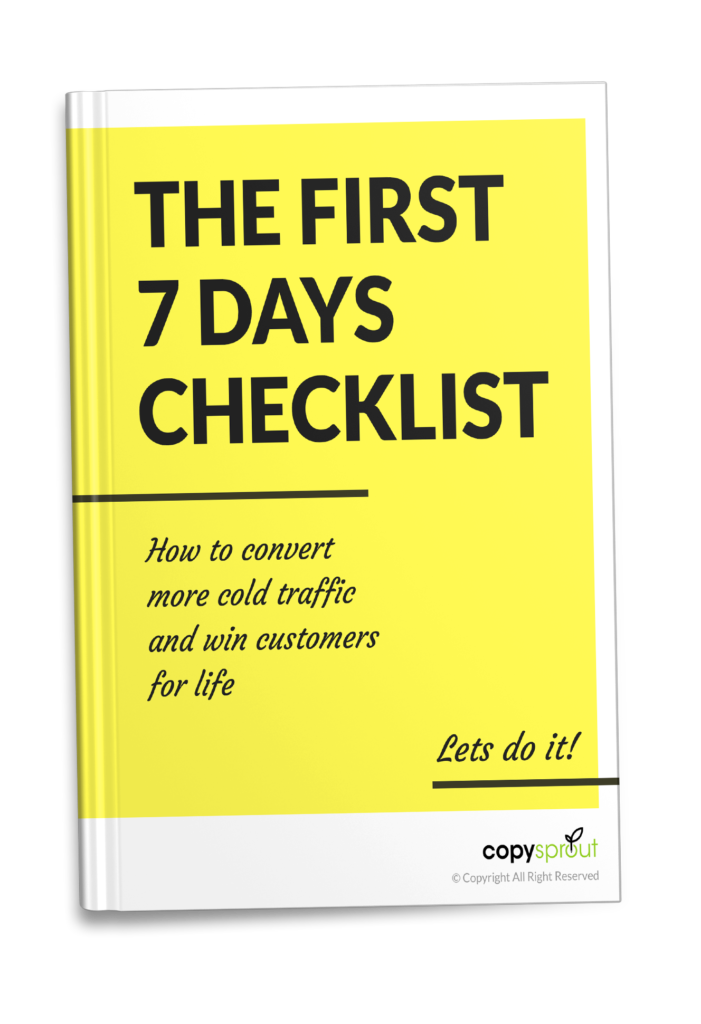One of the coolest things about copywriting is how much psychology goes into it.
(Okay, maybe we have different ideas of what’s “cool.” But I read psych books for fun, so. <—#hugenerd)
Anyway, since I’m reading this stuff anyway, I thought I’d start offering the CliffsNotes version here.
And the first topic will be: Why people can’t grasp big numbers (and why it matters in copywriting).
Now the reason it matters in copy is pretty straightforward … if people can’t grasp big numbers, and you have a lot of numbers in your copy, they’re not going to feel the urgency or the weight of the problem. And then they’re not very motivated to buy.
But what if you HAVE to use big numbers in your copy? What if you’re trying to explain to the reader that their same exact problem kills hundreds of thousands of people every year?
It’s an important point, and yet, your readers won’t really grasp it. So what do you do?
Well, first we’ll talk about why they can’t grasp it, and then I’ll give you some solutions.
One theory is that people are bad at grasping large numbers because there’s no evolutionary benefit. Sure, cavewoman April might’ve needed to know that three antelopes would feed my clan of 20. That’s important for survival. But she would NOT need to know that there are 70-sextillion stars in the Universe. Who cares? She had to kill antelope and invent the wheel and stuff.
These days, however, we’re surrounded by large numbers. Yet our brains still struggle to really understand what those large quantities mean.
You can see this playing out right now, with the number of COVID deaths. In the U.S., more than 433,000 people have died from COVID so far.
But it’s hard for the majority of people to really make sense of that number. So David Kessler, a grief specialist, told National Geographic to think of it like this:
“Assuming there are 138 seats in a classic 737 jet, that would mean 8 planes have crashed on U.S. soil every day.” Every day, for the past year.

If every single day you read about 8 new plane crashes here in the U.S., would you ever set foot on an airplane again? It would seem like a suicide mission.
And that example holds the secret to helping your readers grasp big numbers…
First, you have to break it down into numbers they can understand. Saying “8 plane crashes” is something people can picture. Then, you have to make it relevant to them. Most everyone has flown on a plane. Most everyone has read about a plane crash with some feeling of horror, thinking, “what if that happened to me?” So it feels relevant.
Here’s another example:
I recently read that in Denmark, overall COVID metrics are good enough to suggest the country should have started reopening weeks ago.
However, cases of the new, more contagious variant are growing exponentially in Denmark. And studies have estimated that this strain is 30-70% more contagious than the original.
If that’s the case, and it goes unchecked, the new variant will quickly overwhelm the medical system. People who could have survived COVID will die, simply because hospitals are too full to help them.
Worried Danish leaders have tried to explain to their citizens why they need to stay in lockdown. But this is really hard to do when their case numbers and deaths don’t look that bad.
So in a recent Facebook post, the prime minister tried a new approach. She said to imagine sitting in the top row of Copenhagen’s Parken Stadium, a soccer arena with a capacity of 38,000 people.

A dripping tap is filling it up, one drop the first minute, two drops the second, four drops the third. At that rate, the park will seem almost empty for the first 42 minutes. But two minutes later, it will be completely filled.
I don’t know how many minds this changed — after all, she’s telling them something they really, really don’t want to hear. Hopefully in our copy we’re not delivering a message like that. Because that’s a real uphill battle, and you should probably reconsider the approach or the project.
But notice how the prime minister took a concept like exponential numbers, and she broke it down. One drop, two drops. 42 minutes. And she used a visual that people in Denmark could picture — Copenhagen’s Parken Stadium. From there, it’s not hard to imagine it completely flooded with water.
So … tip #1: Don’t go against human nature and expect people to care about the huge numbers you’re throwing down. They won’t.
Tip #2: Break those big numbers down. Make them relevant and visual. You’re going to have to work a little more to help your readers grasp them.
But if you do it well, you’re going to get far more of them to take action.

